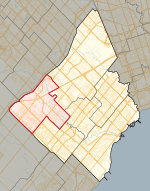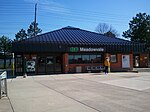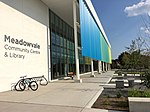Fo Guang Shan Temple, Toronto

Fo Guang Shan Temple of Toronto (Chinese: 多倫多佛光山; pinyin: duō lún duō fó guāng shān) was built to serve as a cultural, educational, community and spiritual centre for Chinese Buddhism and those interested in Buddhist teachings and practice. Founded by Venerable Master Hsing Yun in 1991 and completed in 1997, Fo Guang Shan Temple of Toronto (FGS Toronto) is one of the over 400 Fo Guang Shan Temples worldwide. It was founded with the intention to propagate Humanistic Buddhism to the local community in the Greater Toronto Area, which emphasizes bringing Buddhist teaching into our daily lives and maintaining harmony with the environment, society, each other and within ourselves. The Toronto Buddhist temple branch is located in Mississauga, Ontario, and also operates satellite Dharma centres (Buddha's Light Center) in Markham and Kitchener-Waterloo. The Mississauga facility is approximately 50,000 square feet, and provides many modern functions and services while presenting traditional Chinese temple architecture and style. The building includes a magnificent main shrine, tea house (Water Drop Teahouse), traditional Chan meditation hall, Buddhist cultural museum, library, and bookstore. The Buddha's Light Centres were built to offer members in the eastern portions of the Greater Toronto Area who may not be able to travel to the Mississauga branch.
Excerpt from the Wikipedia article Fo Guang Shan Temple, Toronto (License: CC BY-SA 3.0, Authors, Images).Fo Guang Shan Temple, Toronto
Millcreek Drive, Mississauga Meadowvale
Geographical coordinates (GPS) Address Nearby Places Show on map
Geographical coordinates (GPS)
| Latitude | Longitude |
|---|---|
| N 43.5914 ° | E -79.743 ° |
Address
Millcreek Drive 6525
L5N 6C1 Mississauga, Meadowvale
Ontario, Canada
Open on Google Maps







